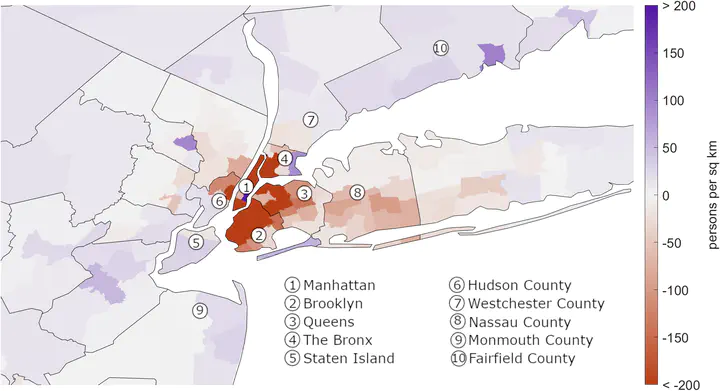Spatial Implications of Telecommuting
 Change in residents, NYC metro area
Change in residents, NYC metro area
Abstract
We build a quantitative spatial model in which some workers can substitute on-site effort with work done from home. Ability and propensity to telecommute vary by education and industry, and telework mitigates the disutility of living far from the job site. We quantify our framework to match the distribution of jobs and residents across 4,502 U.S. locations. A permanent increase in the attractiveness of telework results in a rich pattern of reallocations within and across cities. There are winners and losers: income and welfare go up for workers who can telecommute, and down for those who cannot. This framework robustly predicts changes in residents observed 2020-2021. We use our model to evaluate two competing interpretations of the 2020 remote work shock, and conclude the change in preferences was more important than the change in technology.
Data and interactive visualizations can be had through this nifty online app: Visualizing the Future of Remote Work.
Media: LA Times, Skift, Fast Company, Wallethub